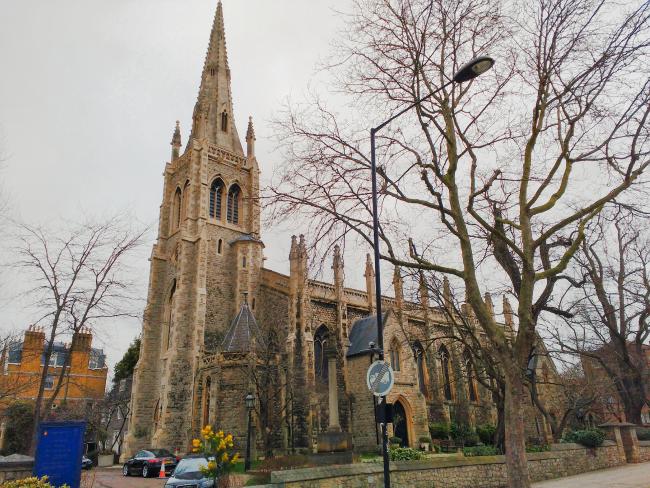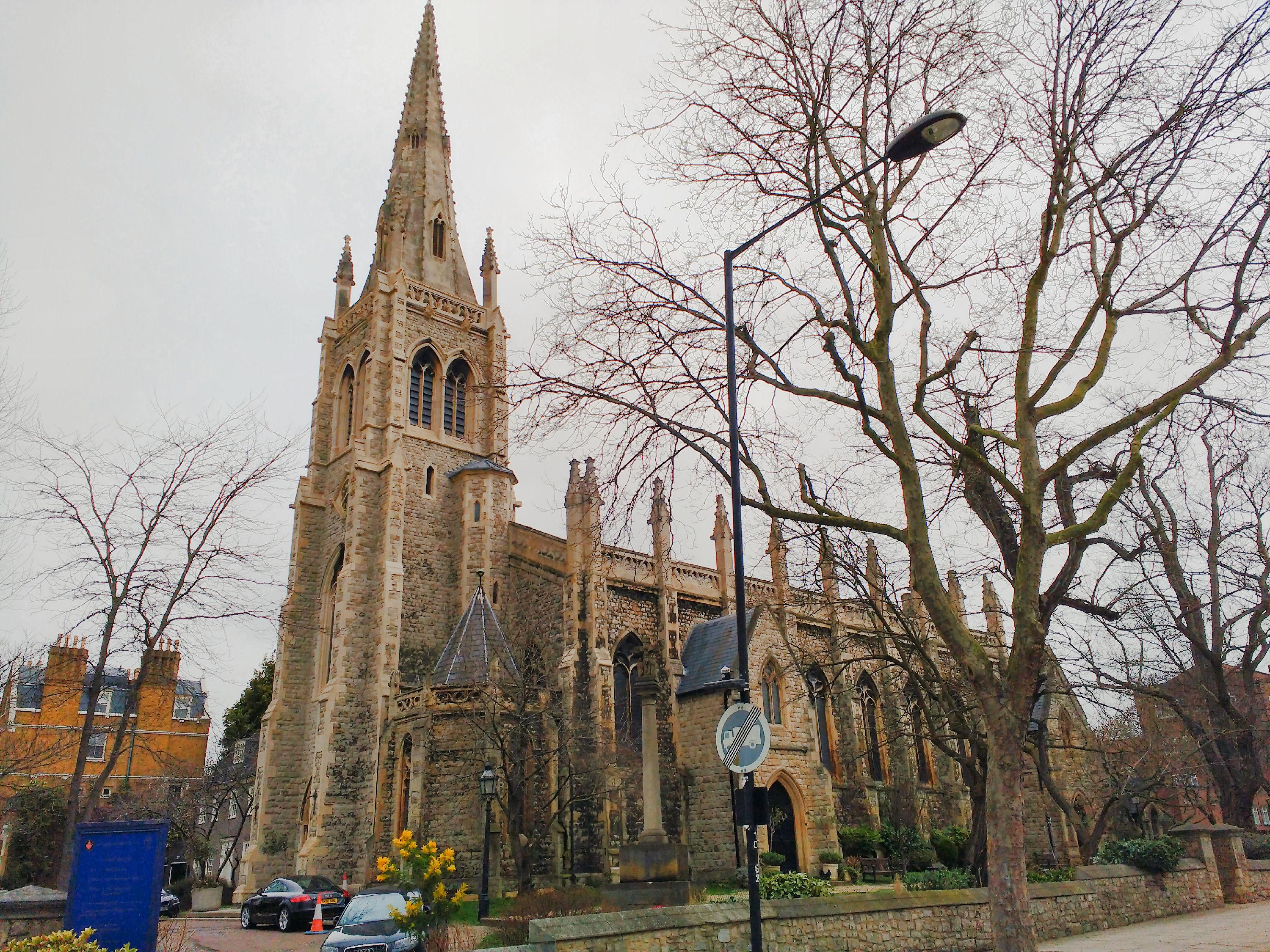St Mark's church in Hamilton Terrace, St John's Wood, London has been severely damaged by a fire on the night of Thursday 26 January 2023. Our thoughts are with the vicar, Kate Harrison, the congregation and all the local people who know and love the church.
St Mark's is an outstandingly beautiful Victorian church that is Listed Grade II*. It is one of the landmarks of the area, and the spire familiar to local people and those on their way to Lord's cricket ground.

It is packed with beautiful mosaics and memorials including one which commemorates the tragedy of the Herald of Free Enterprise, a cross channel ferry which capsized off Zeebrugge, in 1987, and on which the daughter and son-in-law of members of the congregation perished.
St Mark's church had a previous tragedy when in 1941 an enemy bomb hit. As a result the spire had to be re-built. The National Churches Trust very much hopes that this time the church can also come back from the current tragedy and rise again, phoenix like, and continue as a place of beauty, serving local people and the community.
Church fires
Each year, several churches in the UK are severely damaged by fire. Usually these are in disused or abandoned churches and are caused by arson. Others can be caused by electrical faults. If a fire starts in the roof area of a church it can swiftly take hold as the structure contains a lot of highly combustible wood. That was what happened at Notre Dame Cathedral in Paris.
Although it is not clear what caused the tragic fire at St Mark's church in St John's Wood, London, it is a sad reminder of the damage that can result from a fire.
"Fire is surely the worst enemy of a church - it can destroy a roof, its trusses and damage the contents unless the conflagration is spotted early," Richard Carr-Archer, a former Trustee of the National Churches Trust, wrote in our Annual Review about the importance of fire prevention.
"Famously at York Minster the South Transept roof was lost in 1984, almost certainly caused by a lightning bolt hitting an electrical junction box which ignited the wood particles floating in the air causing the fire to spread. The roof spaces are now sub-divided into compartments to minimise fire spread, with a fire monitoring alarm system and an extensive lightning conductor installed.
"More recently, in 2019, it is believed an electrical fault may have caused the catastrophe at Notre Dame in Paris where it seems safeguards and repairs might have fallen badly behind."
"So, if you look after a church, make sure that a fire alarm is fitted, and that it works. That is particularly important if a church uses thatch for its roofing which is particularly vulnerable. Another essential is an up-to-date and regularly inspected lightning conductor."

